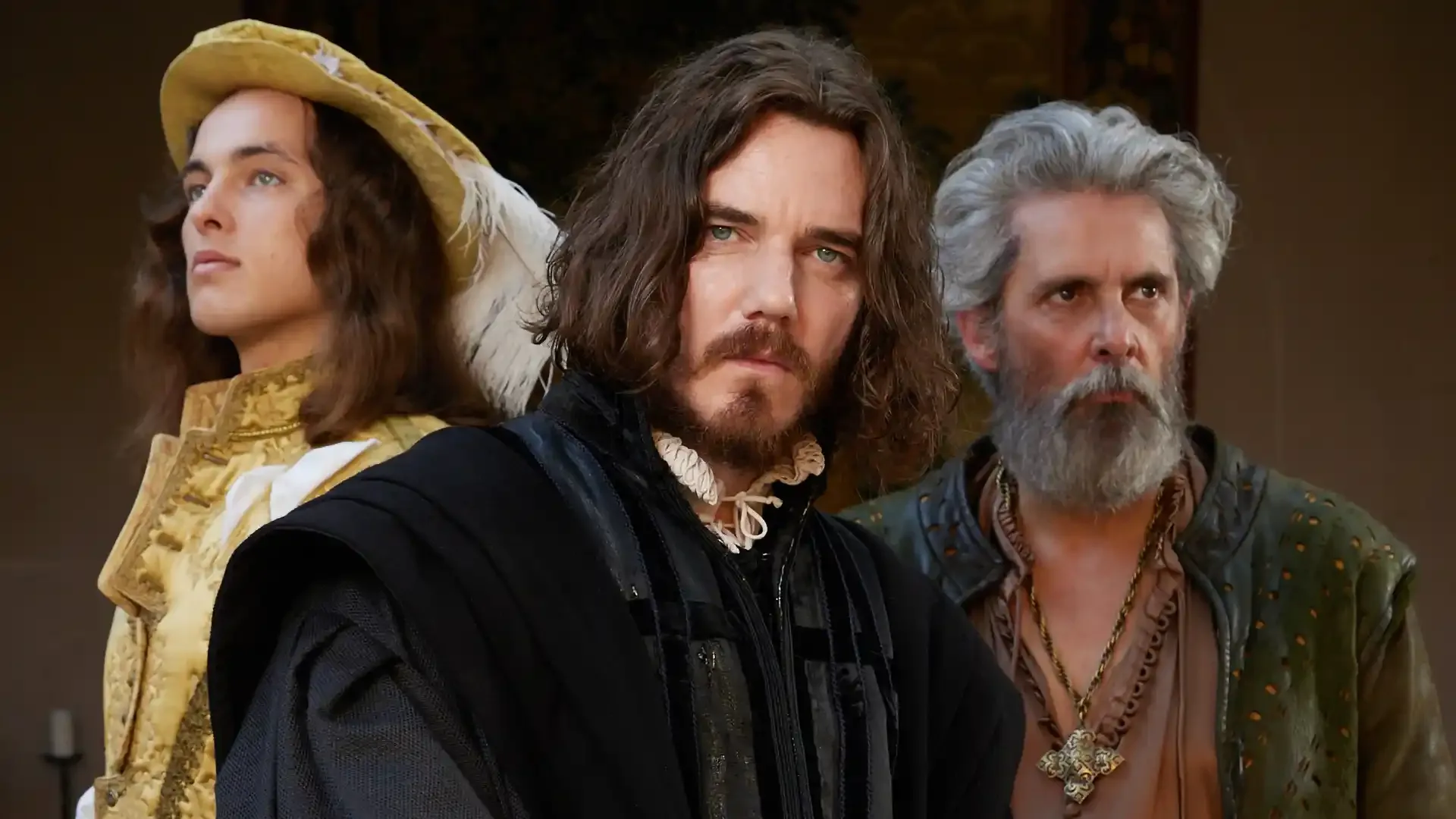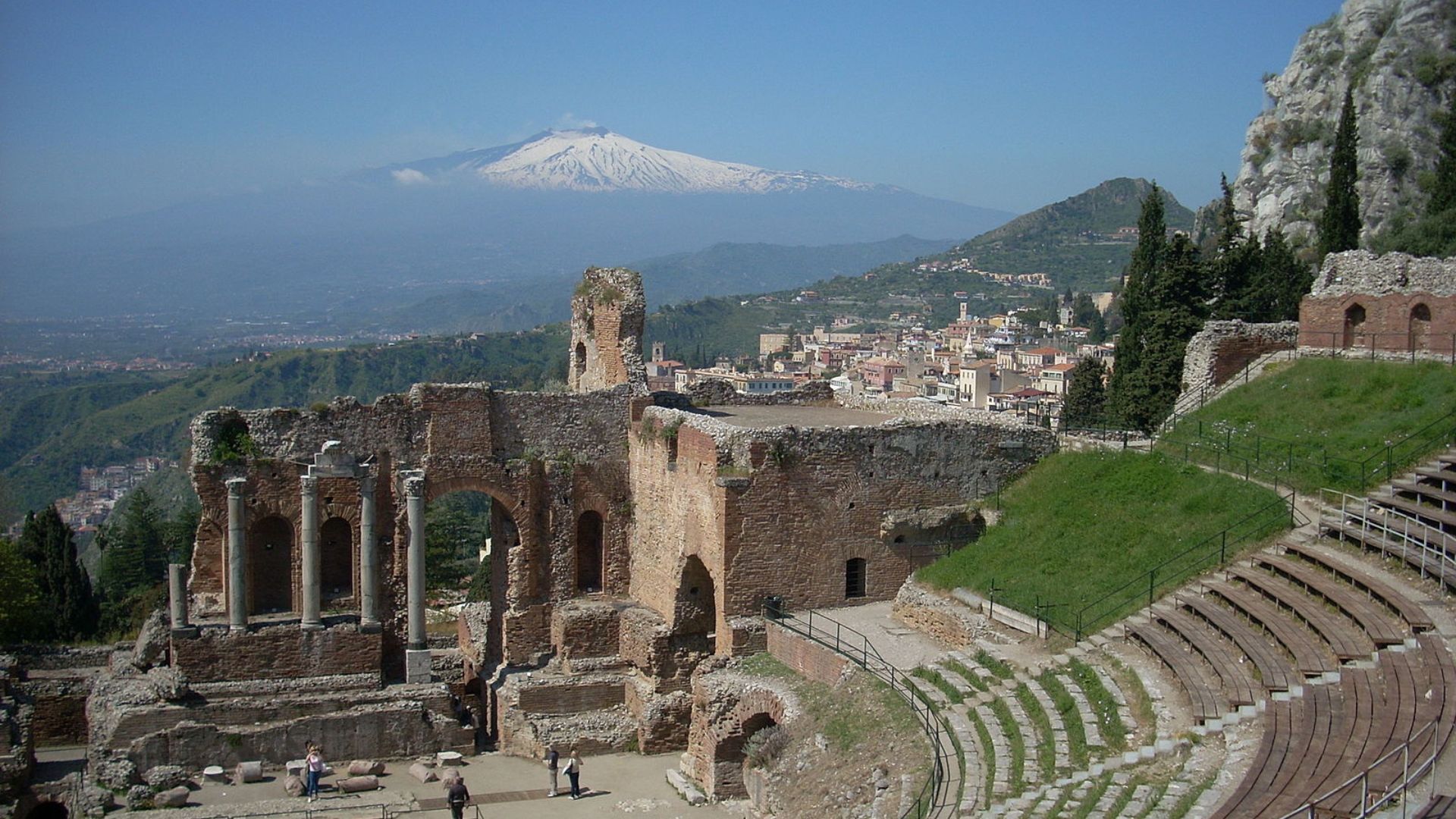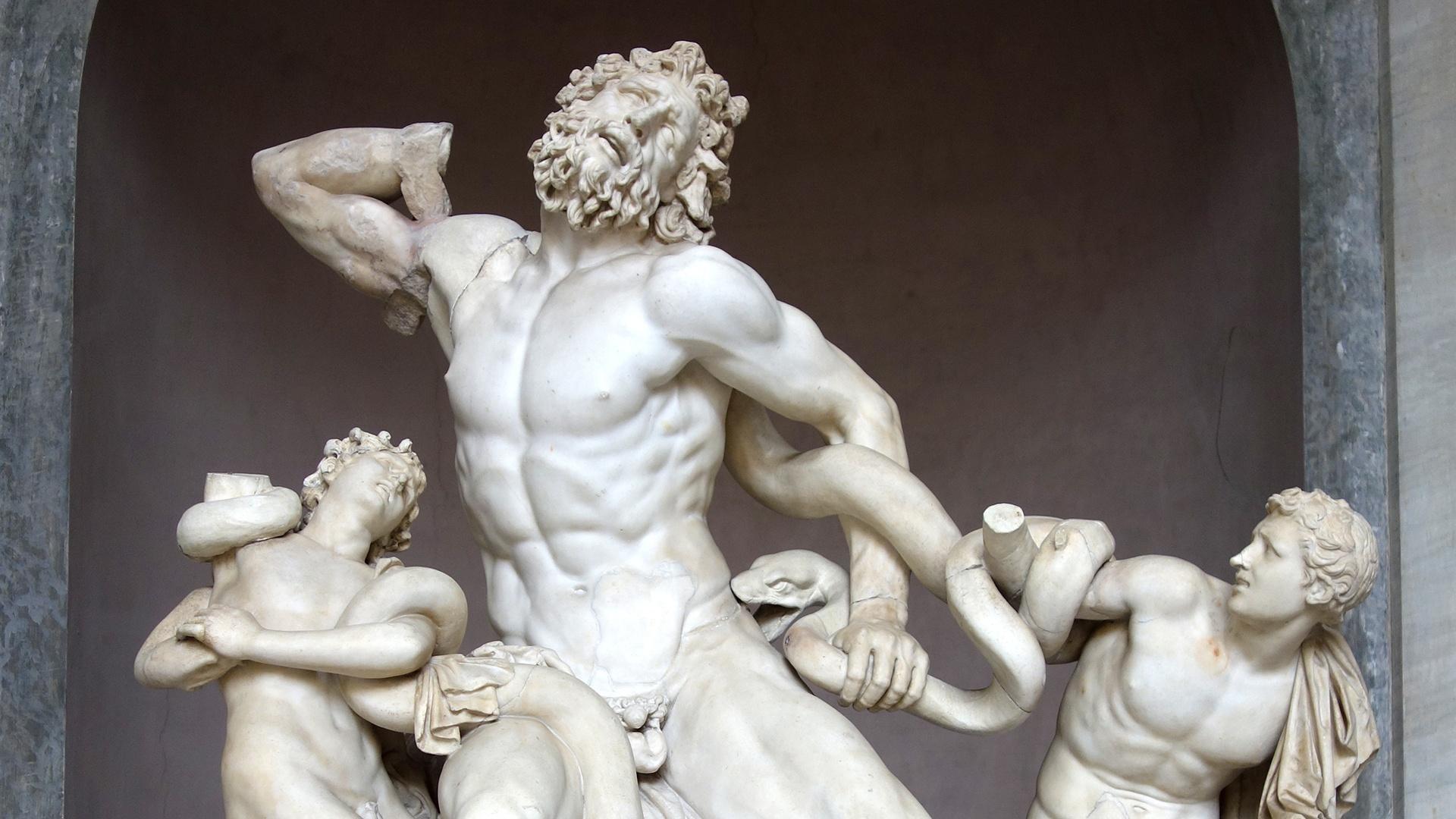Michelangelo's Famous Works: Breathing Life into Stone

Michelangelo, one of the most celebrated figures of the Renaissance, pioneered a life of artistry and innovation. More than 500 years after his birth, the artist’s legacy endures through his acclaimed pieces, many of which are featured in the new PBS series Renaissance: The Blood and the Beauty.
We meet Michelangelo in the program at the age of 13, apprenticing for Domenico Ghirlandaio – one of Florence’s most esteemed painters. Under Ghirlandaio’s guidance, the young Michelangelo develops his craft, and by the time the artist turns 15, Lorenzo de’ Medici, an affluent patron and the most powerful man in Florence, offers Michelangelo residence at his palace.
During his stay there, Michelangelo’s horizons widen as he is able to interact with some of the greatest intellectuals of his time.
While sculpture remains his primary discipline, Michelangelo’s skills also extend to painting, most notably his frescoes in the Sistine Chapel.
Discover some of the famed artist’s most renowned pieces highlighted in the PBS series, Renaissance: The Blood and the Beauty.
La Pietà
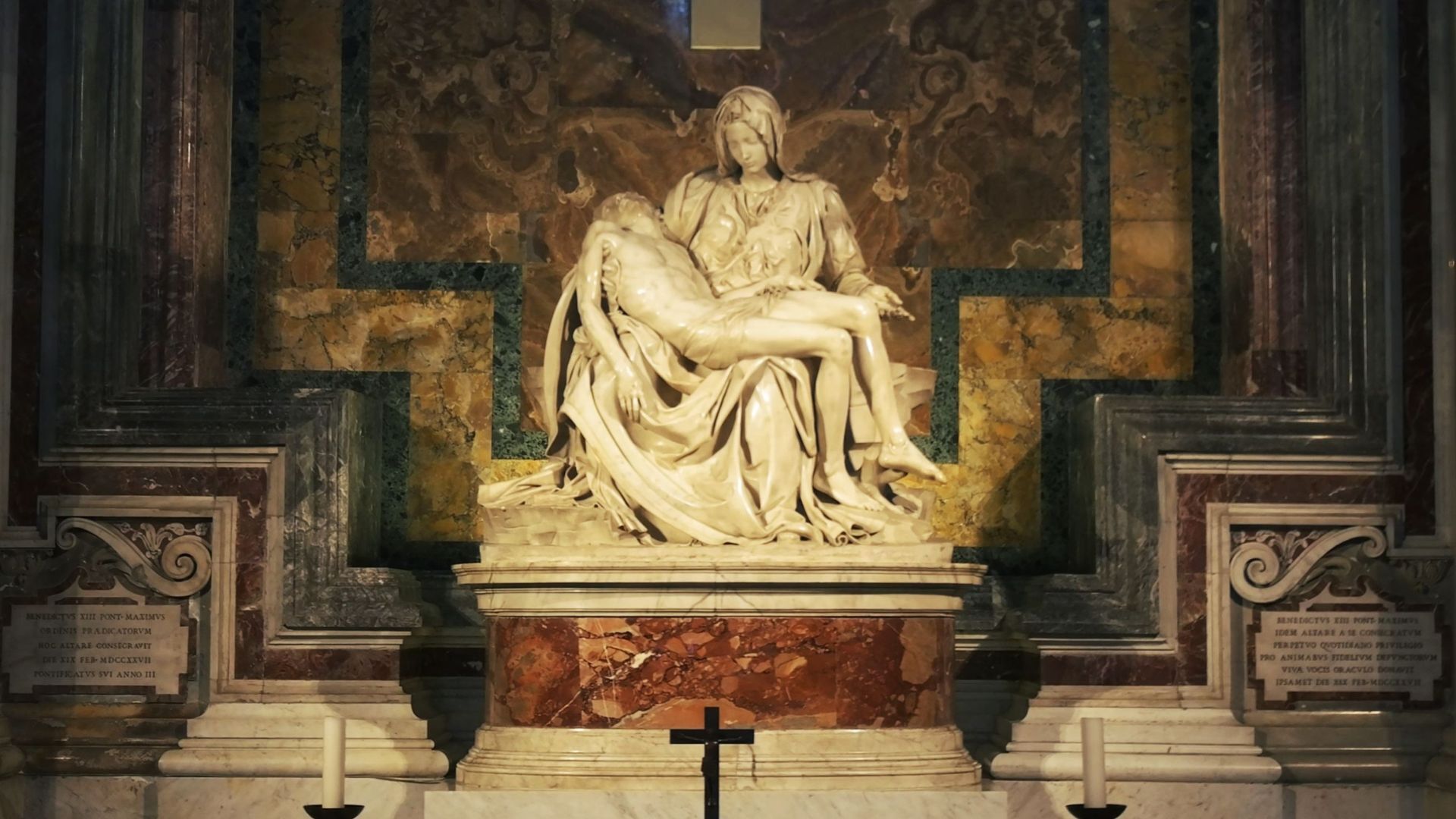
- Name: La Pietà
- Commissioned by: Jean Bilhères de Lagraulas
- Year: 1498 - 1499
- Original Location: St. Peter’s Basilica, Vatican City
- Current Location: St. Peter’s Basilica, Vatican City
Staggering in its scale and scope, La Pietà showcases the depth of Michelangelo's sculpting mastery in addition to his strong religious ties. The statue, depicting the Virgin Mary holding the corpse of Jesus Christ, is commissioned by French cardinal, Jean Bilhères de Lagraulas, for St. Peter’s Basilica in Rome.
Michelangelo’s creation stuns the people of Florence. Following its completion, Michelangelo officially steps into the arena of fame and reputation – and a hunger to prove himself even more. La Pietà is also the only artwork that Michelangelo officially signs, an audacious and nearly unheard-of gesture in his day.
“There’s not a chisel mark to be seen. It’s absolutely beautiful.”
David
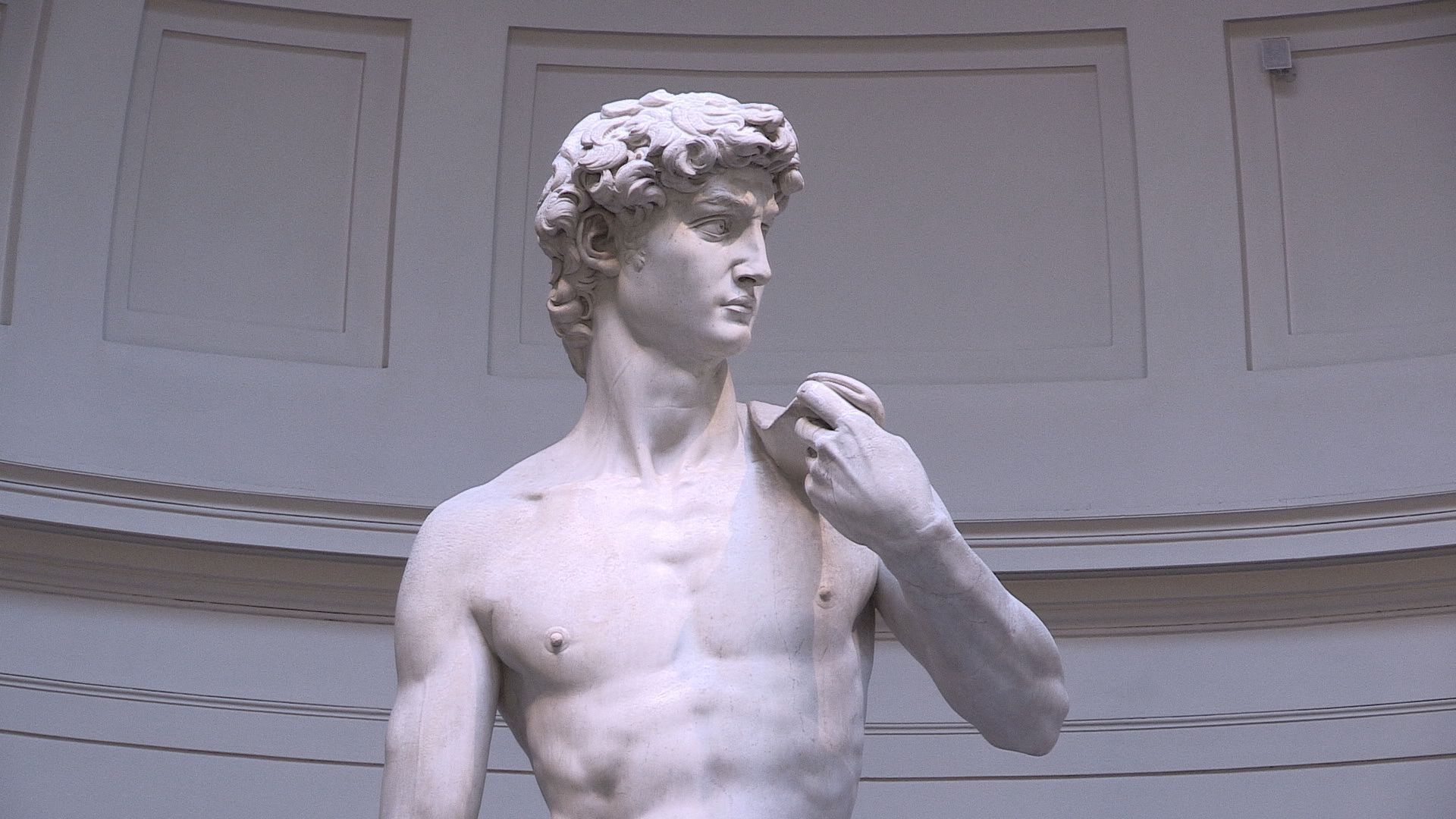
- Name: David
- Year: 1501 - 1504
- Original Location: Palazzo della Signoria, now known as Palazzo Vecchio
- Current Location: Accademia Gallery of Florence
Following the triumph of La Pietà, viewers see Michelangelo aspire to outdo his previous masterpiece. For 40 years, Florence possesses an enormous block of Carrara marble, towering over 17 feet in height. With the newly formed Florentine Republic looking for civic art to boost morale, the city turns to Michelangelo to create a public sculpture of David.
Eager to leave his mark, Michelangelo views the commission as an all-or-nothing bid. He is keenly aware of Leonardo da Vinci’s recent success, who is portrayed as Michelangelo’s greatest rival in Renaissance: The Blood and the Beauty. Fueled by a need to outdo his competitor, Michelangelo embarks on his project that will assert his artistic influence upon the masses.
Roughly three years after receiving his commission, Michelangelo presents his statue before the public. Just as he had hoped, the people of Florence are astonished by the artist’s technical precision as well as his capacity for conveying feeling and thought in his sculpture. Rather than choosing to depict David’s victory against Goliath, Michelangelo opts for more of an unorthodox moment: David in an uncertain state.
“David totally changes the conception of sculpture. He shows that he is able to make inert matter live and asking it to carry feeling and thought.”
Originally meant to display in the Florence Cathedral, David is instead placed in the plaza outside the Palazzo della Signoria – now known as Palazzo Vecchio – which serves as the Florentine town hall. The masterpiece is positioned in such a prominent location despite protests from Leonardo da Vinci, who is motivated to suppress the success of an artistic adversary.

The best of PBS, straight to your inbox.
Be the first to know about what to watch, exclusive previews, and updates from PBS.
Battle of Cascina
- Name: Battle of Cascina
- Commissioned by: Piero Soderini
- Year: 1504 - 1505
- Original Location: Palazzo della Signoria, now known as Palazzo Vecchio
In 1504, while working between masterpieces, Michelangelo takes up another commission: the Battle of Cascina.
Intended to display on one of the walls in the Palazzo della Signoria, the fresco depicts the Florentine victory at the medieval Battle of Cascina where Florence defeated the city of Pisa. Like his commission for David, the Battle of Cascina is designed to create feelings of civic pride for the residents of Florence.
Forever empowered by his competitive side, Michelangelo is driven to go up against his biggest rival, Leonardo da Vinci, who has also been assigned to paint the Battle of Anghiari on an opposite wall.
However, like Leonardo, Michelangelo abandons the Battle of Cascina before ever fully finishing it. By March 1505, Michelangelo is called to Rome by Pope Julius II, who commissions the Florentine to create a mausoleum in his name.
The Sistine Chapel Ceiling
- Name: The Sistine Chapel
- Commissioned by: Pope Julius II
- Year: 1508 - 1512
- Original Location: Sistine Chapel in the Apostolic Palace, Vatican City
- Current Location: Sistine Chapel in the Apostolic Palace, Vatican City
Following his appointment to the papacy, Pope Julius II is determined to rebuild Rome as the religious center of Christianity. To accomplish his goal, he commissions Michelangelo to repaint the ceilings of the Sistine Chapel, which Julius views as lacking the appropriate decoration.
With 600 square meters to fill, roughly the size of three tennis courts, Michelangelo sets out to prove the sheer magnitude of his ambition. As viewers see in the series, he paints in phases, envisioning three different parts of the Old Testament on the ceiling: the creation of the world; the creation of Adam and Eve; and the story of Noah and his ark.
After four punishing years of arduous, labored work, Michelangelo completes his magnum opus. Pope Julius II is astonished by the finished work, which has since become one of the most famous paintings in existence. The fresco contains figures posed in dynamic positions that are reminiscent of Michelangelo’s sculptures.
By the time he completes his masterpiece, Michelangelo is utterly exhausted physically, mentally, and even spiritually – and he’s experiencing a crisis of faith.
"[Michelangelo] wants the story to be about the translation of power, through all of these generations of biblical figures – down to the Pope himself."
The Last Judgement
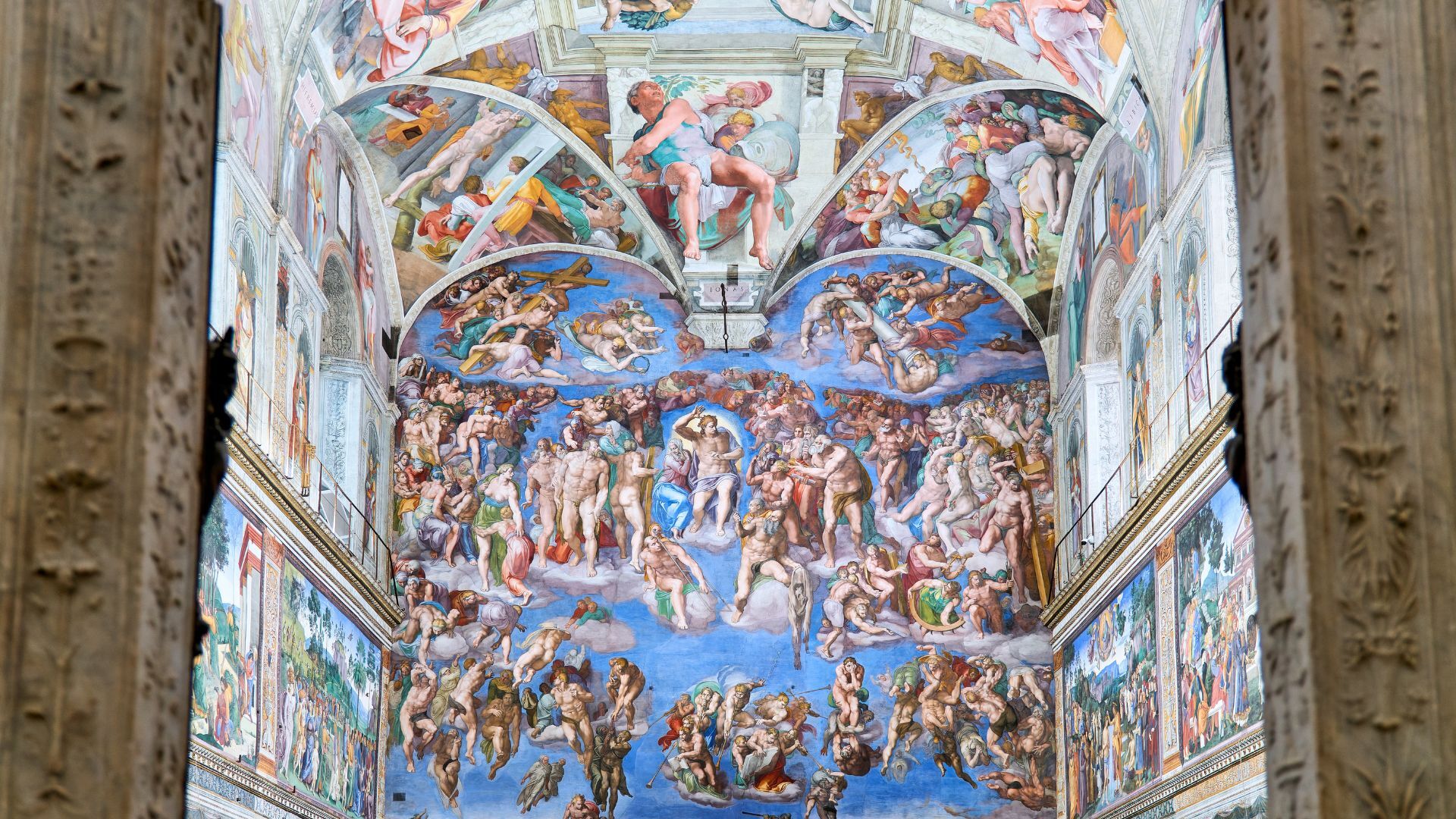
- Name: The Last Judgement
- Commissioned by: Pope Clement VII
- Year: 1534 - 1541
- Original Location: Sistine Chapel in the Apostolic Palace, Vatican City
- Current Location: Sistine Chapel in the Apostolic Palace, Vatican City
Finally, Renaissance: The Blood and the Beauty highlights The Last Judgement, a stunning fresco depicting the Second Coming of Christ, which stands behind the altar of the Sistine Chapel. Commissioned by Pope Clement VII and completed under Pope Paul III, Michelangelo begins his fresco in 1536, finishing it five years later in 1541.
While the painting is admired for its unparalleled achievement, the fresco garners controversy for its inclusion of frontal nudity. In 1565, a year after Michelangelo’s death, members of the Catholic Church order Daniele da Volterra, one of Michelangelo’s pupils, to paint over portions of the nudity.
“I’ve been to the Sistine Chapel… 55 times, and just like everybody who comes in the door, I’m struck by the awesome, overwhelming power and scale and magnificence of The Last Judgement.”
Discover more about Michelangelo’s legacy on the PBS series, Renaissance: The Blood and the Beauty.

